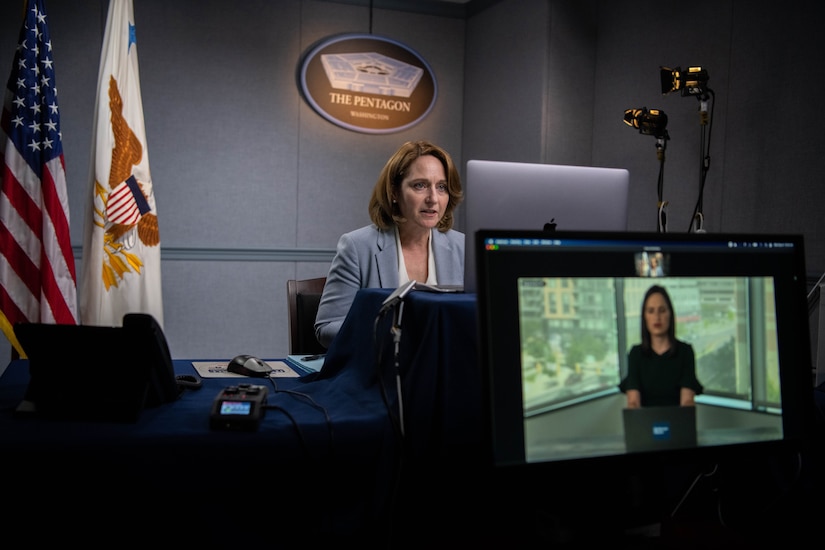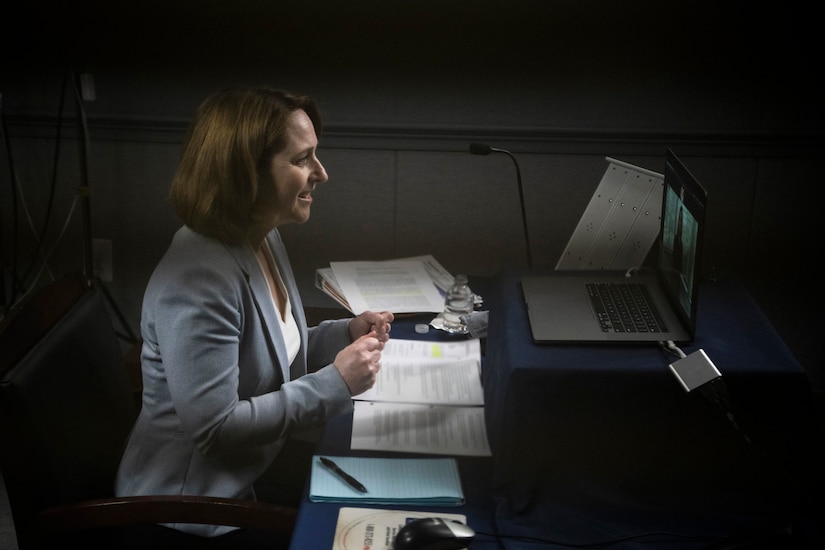Sept. 8, 2021 | , DOD News
In a Defense News forum, the deputy secretary said meeting such a challenge means DOD must link its strategy to its capabilities — and leadership is constructing the department's National Defense Strategy, Nuclear Posture Review and fiscal year 23-27 president's budget request to do so.
"We haven't been resting," Hicks said in prepared remarks. "There are many modernization efforts well underway at the department."

For example, several months ago, Hicks began the Innovation Steering Group, which is empowered to bring analyses, ideas and recommendations forward to drive decision making on issues pertaining to DOD's approach to science, technology and innovation. "It ensures that we get the right capabilities to our warfighters as quickly as possible," she said.
In part, it does so by assessing existing innovation space and examining what changes are necessary in how the DOD acquires advanced systems, and it determines how the DOD might improve incorporating new technology into programs of record, Hicks explained. Among the group's many efforts are:
- Bolstering DOD's joint experimentation efforts so that its services work more closely together on new technology development and acquisition.
- Developing policies to adequately invest in necessary research, test and lab infrastructure.
- Ensuring the DOD innovation ecosystem — a complex web of more than 200 entities working on everything from research and development to rapid acquisition — is optimized to address the most pressing technical priorities.
"I firmly believe that national objectives should connect to the budget through concepts and capabilities," Hicks said. "That is why I've put an emphasis on expanding joint experimentation to rapidly advance innovative operational concepts. To assist us in this effort, we developed the Rapid Defense Experimentation Reserve."
Through the RDR initiative, the DOD is galvanizing joint experimentation efforts across the department in areas vital to joint warfighting, including logistics, fires, command and control, and capabilities to drive information advantage, she said.
Components have submitted hundreds of proposals for consideration. The DOD's fiscal year 23 budget will reflect the most-promising ones for exploration and transition to full adoption, Hicks added.
Further, foundational to DOD's joint concepts is an approach to leveraging data and artificial intelligence, she said, noting that data is the ammunition of the future and key to maintaining that operational advantage. Consequently, Hicks released a series of data decrees earlier this year that ensures that DOD data is visible, accessible, understandable, linked, trustworthy, interoperable and secure.
Many DOD joint concepts capitalize on both AI and data-driven technologies, and they will be rapidly advanced by the AI and Data Acceleration Initiative, she said.
Hicks said the ADA will produce data and operational capabilities for combatant commanders designed for real-time sensor data fusion, automated command and control tasking and autonomous system integration. The ADA will enable combatant commanders to act faster than our adversaries, she said.

"We will do so by working closely with combatant commands and make incremental advances in process automation and human-machine teaming," Hicks said, adding that the ADA represents a software engineering approach that seeks continual infrastructure, algorithm and data advances.
In the first phase of ADA, which the DOD calls "discovery," a team of four to eight people will travel to one of the combatant commands to work closely with commanders to explore their priorities and work to understand systemic issues impacting data-centric and automated workflow operations. That work will provide the foundation to establishing specific operational use cases, milestones and metrics, she explained.
Phases 2 and 3 will include embedding operation data teams, ensuring combatant commands are operating in-line with the DOD's Data Strategy and the Data Decrees, and make sure the commands work closely with the Joint Artificial Intelligence Center to leverage AI and accelerate "critical workflows . . . and other tools to facilitate decision advantage in competition and conflict," Hicks said.
"And while we undertake and monitor initiatives such as ADA, we know that a vibrant industrial base will be critical to creating and advancing new capabilities," the deputy defense secretary said. "We want to harness from the very best of America in sourcing a broad, diverse set of potential partners and suppliers. That especially includes small businesses."
Small businesses lead the nation in innovation by producing 16.5 times more patents than large patenting firms, and delivering rapid operational concepts, prototypes and demonstrators that allow the DOD to respond with agility and efficiency, Hicks said.
"Over the last decade, DOD has dramatically increased our small business spending in research and development by 83%. In that same time, we've expanded spending in small business manufacturing by 28%," she said, adding that in the past decade, small businesses in the Defense Industrial Base have shrunk by over 40%.

The DOD is subsequently committed to examining the administrative barriers that small businesses face in working with the department, Hicks noted. "And we will take meaningful action to remove barriers where we can. [The DOD is] "also reinvigorating our small business programs to provide streamlined, easier-to-use entry points into the defense marketplace and ensuring better long-term planning for our small business programs."
The deputy defense secretary also emphasized modernization and innovation are additionally at the heart of the DOD's approach to climate change.
"The effects of climate change are a national security issue, potentially impacting the department's missions and operational plans, readiness, our installations and budget," she said. "It does this by simultaneously increasing demands on the force while impacting our capacity to respond to those demands."
The DOD is combating climate change by ensuring that our resilience is enhanced, she said. As an example, the DOD recently released a climate assessment tool and report that highlights installation exposure to climate change and identifies the correct resilience measures.
"Additionally, we are focused on mitigating the effects of climate change," Hicks said, by making investments in both electric vehicles and charging infrastructure for the DOD's 170,000 non-tactical vehicles.
"Significantly, our mission objectives and climate goals are in alignment," the deputy defense secretary said. "We will leverage that alignment to modernize the force, strengthen our supply chains and compete with China for the energy technologies that are essential to our future success."
No comments:
Post a Comment